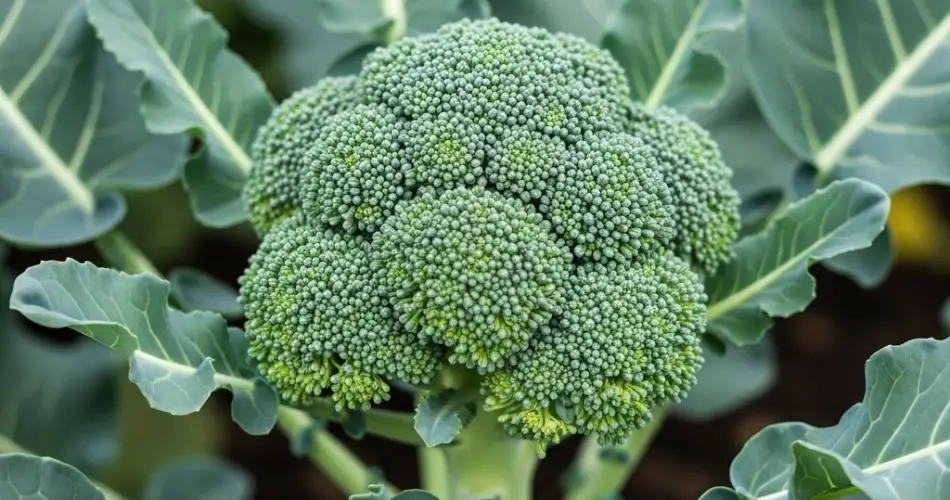Growing broccoli from seed indoors is a great way to get a head start on your garden and ensure healthy, productive plants. Broccoli is a cool-weather crop that thrives when started early, giving you a better chance at a bountiful harvest before the heat of summer or the frost of fall sets in. Here’s a detailed guide on everything you need to start broccoli from seed indoors successfully.
Why Start Broccoli Indoors?
Broccoli is sensitive to temperature fluctuations, especially during its early stages. Starting seeds indoors allows you to control the growing environment, ensuring strong and resilient seedlings ready for transplant. This method also extends your growing season, especially in regions with short springs or unpredictable weather.
When to Start
Timing is key. Start broccoli seeds indoors about 6 to 8 weeks before the last expected frost date in your area. For a fall crop, you can start seeds in late summer, about 85 to 100 days before the first expected frost of autumn. Broccoli prefers temperatures between 60–70°F (15–21°C), so keep that in mind when planning your planting schedule.
What You’ll Need
-
Broccoli Seeds
Choose a variety suited to your climate and growing space. Popular varieties include ‘Calabrese’, ‘Waltham 29’, and ‘De Cicco’. Look for organic or untreated seeds for healthier plants. -
Seed Starting Trays or Pots
Use seed trays with individual cells, small pots, or recycled containers like yogurt cups with holes poked in the bottom for drainage. -
Seed Starting Mix
A light, well-draining seed starting mix is essential. Avoid regular potting soil, which can retain too much moisture and lead to poor germination or damping off. -
Grow Lights or Sunny Window
Broccoli needs plenty of light—at least 14 to 16 hours a day. If you don’t have a bright, south-facing window, use grow lights positioned a few inches above the seedlings. -
Plastic Dome or Clear Cover (Optional)
To keep humidity high during germination, you can use a plastic cover or a clear lid over the tray. Remove it once seedlings sprout to prevent mold or fungal issues. -
Spray Bottle or Gentle Watering Can
Keep the soil moist but not waterlogged. A spray bottle can help you water gently without disturbing the seeds. -
Fertilizer (Optional)
Once the seedlings develop true leaves, you can feed them with a diluted liquid fertilizer to promote healthy growth.
How to Start Broccoli Seeds Indoors
-
Prepare Your Trays or Pots
Fill your containers with seed starting mix. Moisten the mix before planting—it should feel like a wrung-out sponge. -
Plant the Seeds
Sow one or two seeds per cell or pot, about ¼ inch (6 mm) deep. Gently cover them with soil and mist with water. -
Provide Warmth and Humidity
Place the trays in a warm location (65–75°F or 18–24°C) and cover them with a plastic dome if needed. Keep the soil consistently moist. -
Watch for Germination
Broccoli seeds usually germinate within 5 to 10 days. Once sprouts emerge, remove any plastic cover and move the seedlings to a bright location or under grow lights. -
Thin the Seedlings
Once seedlings have a set of true leaves, thin them by snipping the weaker one at the soil line if more than one has sprouted in a cell. This gives the strongest seedling more room to grow. -
Harden Off Before Transplanting
About 1–2 weeks before moving seedlings outdoors, begin hardening them off. Gradually expose them to outdoor conditions—start with an hour or two a day in a sheltered spot, increasing daily. This process toughens them up for the transition to the garden.
When and How to Transplant
Transplant your broccoli seedlings outdoors when they are 4 to 6 weeks old, have 4–5 true leaves, and the risk of hard frost has passed. The soil should be well-draining and rich in organic matter. Space the plants about 18 inches apart in rows 24 inches apart. Water well after transplanting, and mulch to retain moisture and suppress weeds.
Final Tips for Success
-
Water consistently, keeping the soil evenly moist but not soggy. Avoid overhead watering to reduce the risk of disease.
-
Keep an eye on pests like aphids or cabbage worms. Use row covers or organic deterrents if necessary.
-
Fertilize lightly if needed once the plants are established in the garden.
-
Harvest broccoli heads when they are tight and firm, before the yellow flowers start to open.
By starting broccoli indoors, you can give your plants a strong start and enjoy a more reliable harvest. With the right care and attention, you’ll have fresh, homegrown broccoli ready to grace your meals in just a few months.



